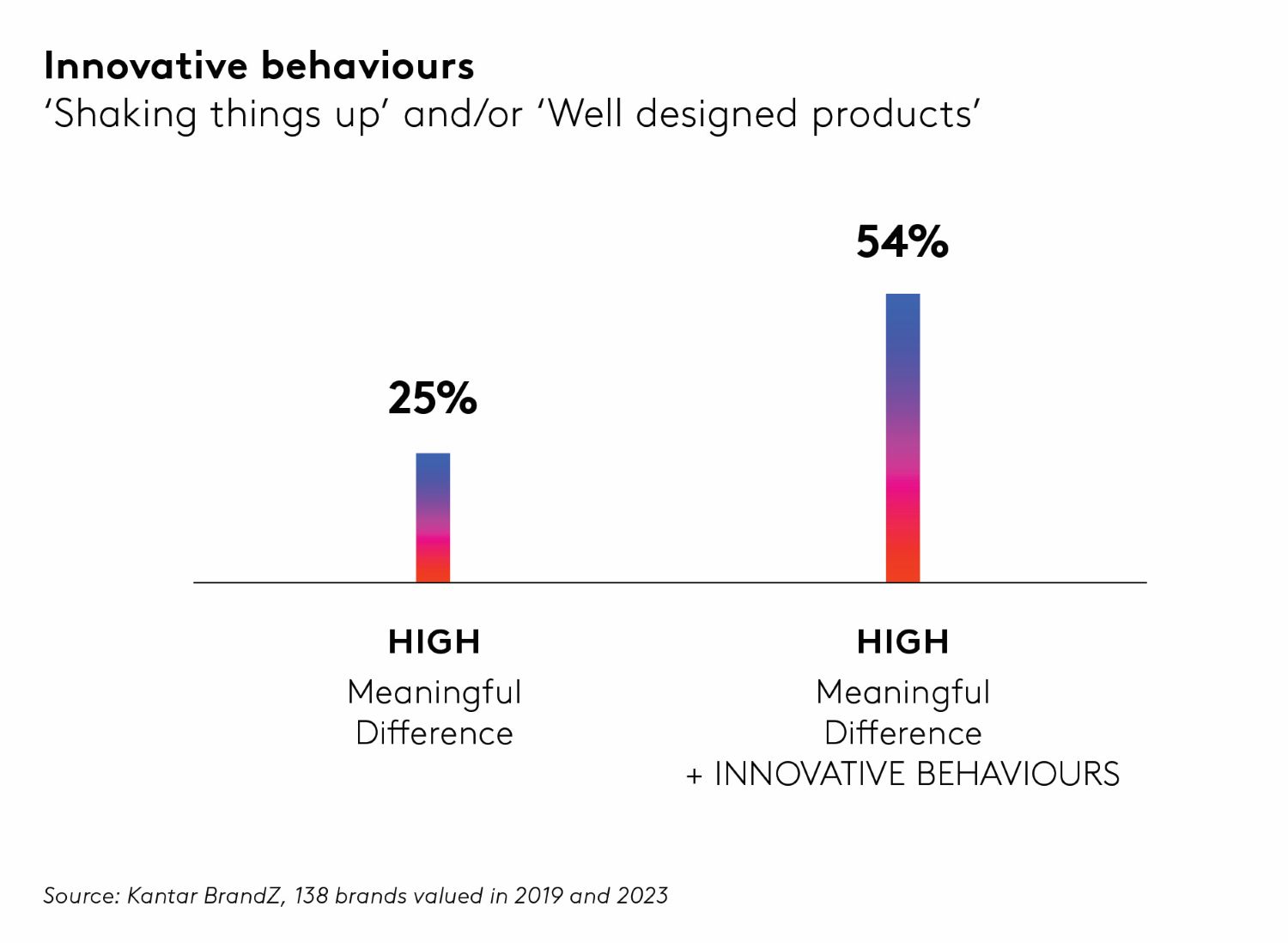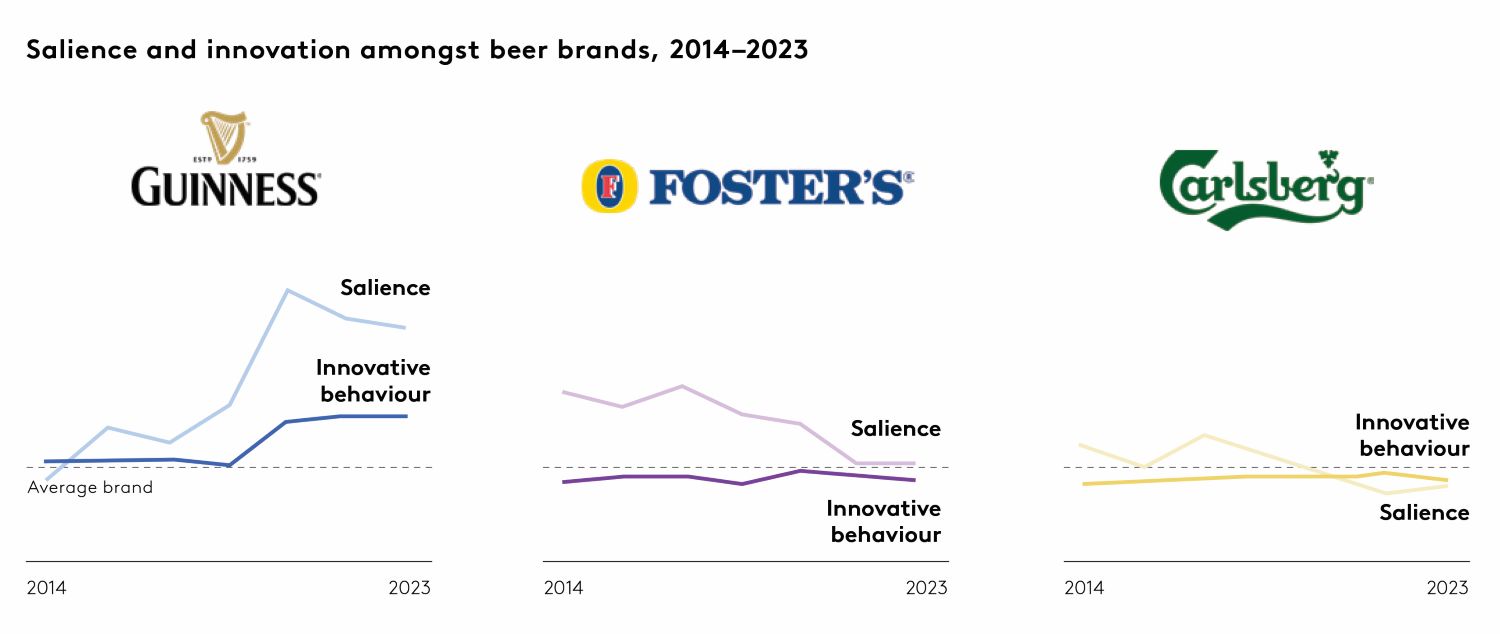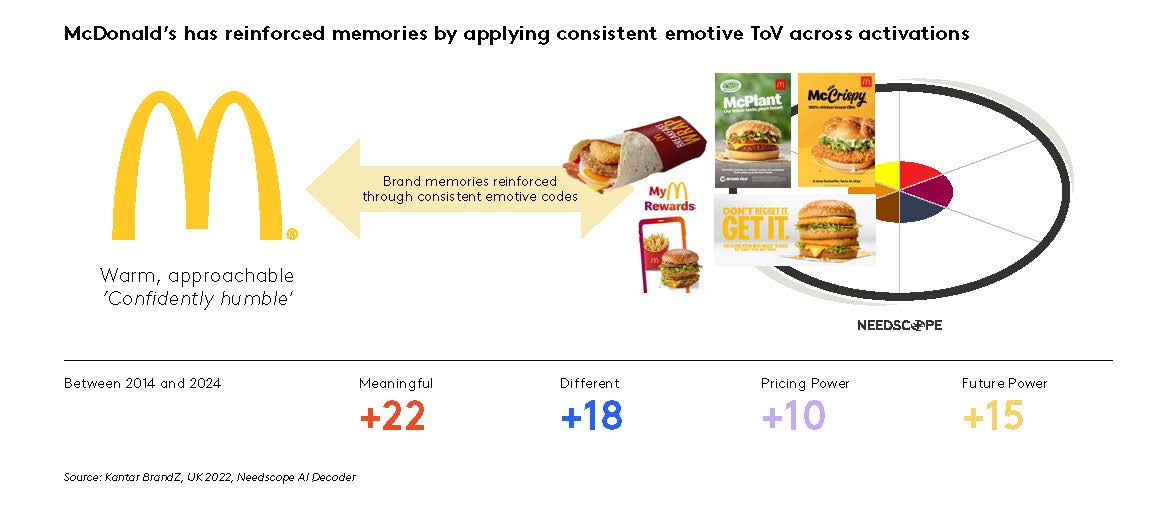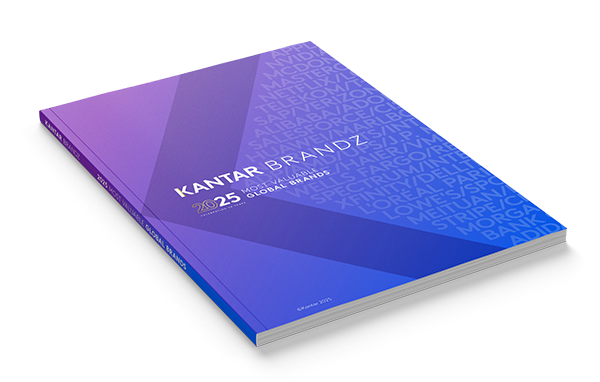Salience has long been heralded as the cornerstone of brand success. While coming to mind easily is important for brands, it is not enough. Kodak was once highly salient, yet it failed to capitalise on digital imaging. Sony was once the top name in portable audio, then it lost out to the Apple iPod.
Innovation is the true lifeblood of brands. Innovation not only fuels brands’ ability to remain salient and relevant – it also propels them to growth driven by meaningful difference. Without innovation, brands risk becoming well known for the wrong reasons (for being old-fashioned or out of touch, for instance). With innovation, the sky’s the limit.
According to Kantar BrandZ analysis, brands that are meaningful, different and innovative are twice as likely to drive growth as those that are just meaningful and different.

Outdated organisational methods may be to blame: innovation belonged to the R&D labs, while the marketing teams focused on the challenge of ‘brand personality’. But in reality, brand personality can only be authentic when consumers see evidence that a brand is actually what it claims to be – in other words, when it is backed by innovation.
Alcohol brand Baileys illustrates this well. Baileys has long been highly salient, but last decade, it found itself losing meaningfulness and difference in the UK. In response, it came up with the idea of reimagining itself as a treat brand. At the same time, it set out to substantiate this repositioning via innovation.
What followed were new innovations like ‘Baileys Strawberries and Cream’, ‘Baileys 0%’, and an ice cream partnership with Häagen-Dazs. These offerings supported Baileys new brand positioning while also helping it expand into new occasions where its meaningful difference could shine. Last year, Bailey’s won Kantar’ ‘Outstanding Innovation Award’ for demonstrating strong growth across the key metrics of Meaningfulness, Difference and Salience, and in turn, sales (as measured by Kantar BrandZ and Kantar Worldpanel).
Elsewhere in Alcohol, we’ve seen Guinness invest heavily in innovation while competitors like Carlsberg and Foster’s have not. In 2014, Carlsberg and Foster’s had stronger salience than Guinness. By focusing on innovation, Guinness gained back its salience edge, while also rising in meaningful difference.

There are, however, a few watchouts when it comes to innovation. From time to time, I frustratingly hear innovators say: ‘I need to give my consumer new news’. However, as explained in Kantar’s Blueprint for Brand Growth, innovation should never be about launching something new for the sake of it. It should be about delivering better news – offerings that meet consumer needs better than competitors, in a meaningful and different way. That is what leads to both short-term gains and long-term brand equity, as seen with Baileys and Guinness.
Another nuance is that it’s important to keep emotional clarity and consistency in mind when innovating. This allows you to work with the connections your brand has already made in consumers’ minds, rather than confusing them. McDonald’s is a great example of a brand that continuously innovates while maintaining a strong, coherent brand. It has reimagined itself as a coffee destination of choice, introduced new plant-based offerings, and turned the McFlurry into a platform for playful invention. It has done all of this in a way that remains consistent with its NeedScope positioning: as a warm, approachable, ‘confidently humble’ brand. Without that consistency, McDonald’s would have risked its strong score for Meaningful Difference, ultimately undermining its moves to be more present and find new space.

In sum, salience alone cannot secure long-term success. Brands must continually innovate to remain relevant, meaningful and different in consumers’ eyes. Those that use data-driven insights to create superior offerings will gain a competitive edge – an edge rooted in deeper emotional connections. In this way, the future belongs to brands that are bold enough to innovate.
Discover more data-driven insights in the 20th anniversary edition of Kantar BrandZ’s Most Valuable Global Brands report now available at www.kantar.com/campaigns/brandz/global
For a quick read on your brand’s performance compared to competitors in a specific category, Kantar’s free interactive tool, BrandSnapshot powered by BrandZ, provides intelligence on 15,000 brands in 40+ markets. Find out more here.
Innovation is the true lifeblood of brands. Innovation not only fuels brands’ ability to remain salient and relevant – it also propels them to growth driven by meaningful difference. Without innovation, brands risk becoming well known for the wrong reasons (for being old-fashioned or out of touch, for instance). With innovation, the sky’s the limit.
According to Kantar BrandZ analysis, brands that are meaningful, different and innovative are twice as likely to drive growth as those that are just meaningful and different.

Why do some brands fail to see the importance of innovation?
Outdated organisational methods may be to blame: innovation belonged to the R&D labs, while the marketing teams focused on the challenge of ‘brand personality’. But in reality, brand personality can only be authentic when consumers see evidence that a brand is actually what it claims to be – in other words, when it is backed by innovation.
Alcohol brand Baileys illustrates this well. Baileys has long been highly salient, but last decade, it found itself losing meaningfulness and difference in the UK. In response, it came up with the idea of reimagining itself as a treat brand. At the same time, it set out to substantiate this repositioning via innovation.
What followed were new innovations like ‘Baileys Strawberries and Cream’, ‘Baileys 0%’, and an ice cream partnership with Häagen-Dazs. These offerings supported Baileys new brand positioning while also helping it expand into new occasions where its meaningful difference could shine. Last year, Bailey’s won Kantar’ ‘Outstanding Innovation Award’ for demonstrating strong growth across the key metrics of Meaningfulness, Difference and Salience, and in turn, sales (as measured by Kantar BrandZ and Kantar Worldpanel).
Elsewhere in Alcohol, we’ve seen Guinness invest heavily in innovation while competitors like Carlsberg and Foster’s have not. In 2014, Carlsberg and Foster’s had stronger salience than Guinness. By focusing on innovation, Guinness gained back its salience edge, while also rising in meaningful difference.

The hidden risks of innovation you need to know
There are, however, a few watchouts when it comes to innovation. From time to time, I frustratingly hear innovators say: ‘I need to give my consumer new news’. However, as explained in Kantar’s Blueprint for Brand Growth, innovation should never be about launching something new for the sake of it. It should be about delivering better news – offerings that meet consumer needs better than competitors, in a meaningful and different way. That is what leads to both short-term gains and long-term brand equity, as seen with Baileys and Guinness.
Another nuance is that it’s important to keep emotional clarity and consistency in mind when innovating. This allows you to work with the connections your brand has already made in consumers’ minds, rather than confusing them. McDonald’s is a great example of a brand that continuously innovates while maintaining a strong, coherent brand. It has reimagined itself as a coffee destination of choice, introduced new plant-based offerings, and turned the McFlurry into a platform for playful invention. It has done all of this in a way that remains consistent with its NeedScope positioning: as a warm, approachable, ‘confidently humble’ brand. Without that consistency, McDonald’s would have risked its strong score for Meaningful Difference, ultimately undermining its moves to be more present and find new space.

In sum, salience alone cannot secure long-term success. Brands must continually innovate to remain relevant, meaningful and different in consumers’ eyes. Those that use data-driven insights to create superior offerings will gain a competitive edge – an edge rooted in deeper emotional connections. In this way, the future belongs to brands that are bold enough to innovate.
Discover more data-driven insights in the 20th anniversary edition of Kantar BrandZ’s Most Valuable Global Brands report now available at www.kantar.com/campaigns/brandz/global
For a quick read on your brand’s performance compared to competitors in a specific category, Kantar’s free interactive tool, BrandSnapshot powered by BrandZ, provides intelligence on 15,000 brands in 40+ markets. Find out more here.





